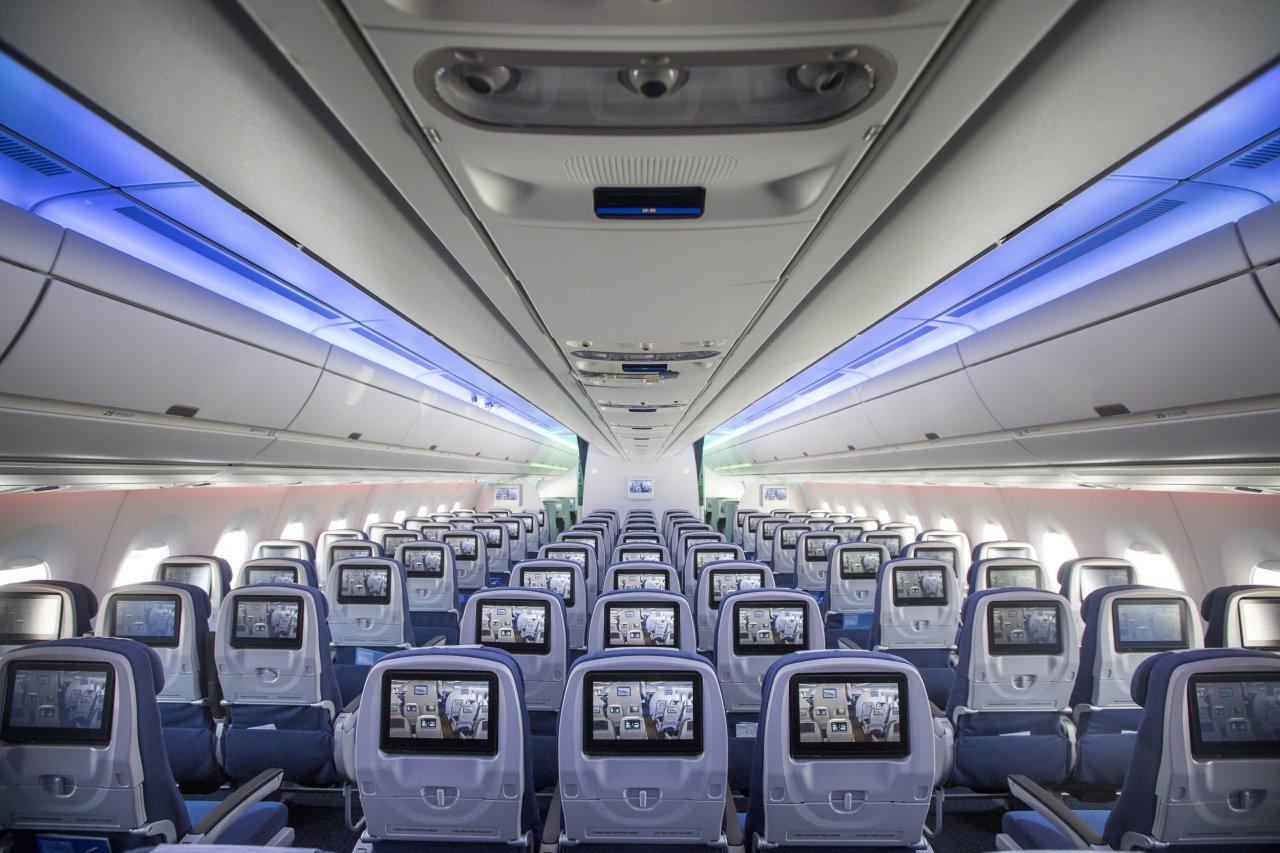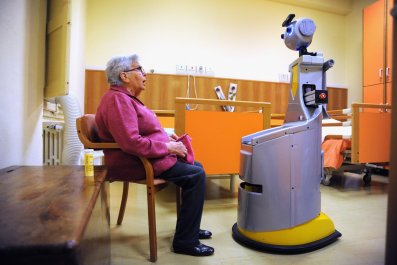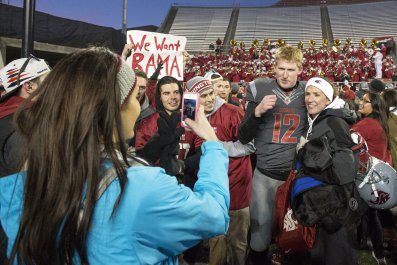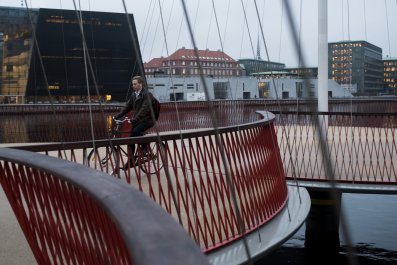Modern-day flight is a miracle with side effects. You can get halfway around the world, traversing multiple time zones in just hours, but fatigue and disorientation are sure to ruin the first day in your destination city. What we commonly call jet lag is actually a form of circadian desynchrony—a disruption to the body's internal clock. There are some useful remedies available: Over-the-counter doses of melatonin, a hormone that helps align the circadian rhythm, can lessen the symptoms if taken at the right time, for example. But what if the plane itself could prevent jet lag?
French-based aircraft manufacturer Airbus designed a new plane, the A350 XWB, fitted with LEDs that can generate 16.7 million color combinations of light inside the cabin. The idea is to trick passengers' bodies by exposing them to faux sunlight that changes throughout the flight, mimicking the natural progression of day into night and night into day. If it works, it could be a boon to those who travel regularly; when circadian rhythm disruptions—also commonly seen in people who work night shifts or are constantly exposed to artificial lighting—become chronic, they can have longer-term effects on the body, raising the risk for life-threatening conditions such as heart disease and obesity.
Though the A350 hasn't undergone any clinical testing, it could in theory work, says Frank Scheer, neuroscientist and researcher of circadian and sleep disorders at Harvard University. "The most important property of effectively resynchronizing your body clock with light is timing," he says. "If I shine light on your eye in the evening, I will delay your clock. If I do the same in the morning, I will advance it." In other words, the changing light should be scheduled to match the course of the sun in the time zone of your destination, not your origin.
But even if Airbus gets that right, Scheer says, the method still might not work if you're traveling over long distances from west to east. For instance, if you left Boston at 6 p.m. and took an eight-hour flight that arrived in Amsterdam at 8 a.m. local time, and the plane's lights were set to simulate sunrise, it would backfire. Since your body's clock will still be running on Boston time (where it's now 2 a.m.), your body will interpret the light as late evening, not early morning. Scheer is skeptical that the A350's system has worked through all these nuances.
Meanwhile, Airbus is forging ahead: Qatar Airways debuted the A350 in January 2015, and it made its first flight to the U.S. in December. The airline began regular service to Philadelphia in January this year and plans to start offering it to Boston and New York in March. Regardless of whether the A350 really has cracked the secret to preventing jet lag, the early reviews aren't shabby. "I arrived feeling great," says travel journalist and editor-in-chief of The Points Guy Zach Honig, who rode the A350 on a 12-hour flight from New York to Doha, Qatar, and then on to Munich. "Even though I only got a couple hours of sleep on both flights, I was very productive during my Doha layover and hit the ground running in Munich."






















